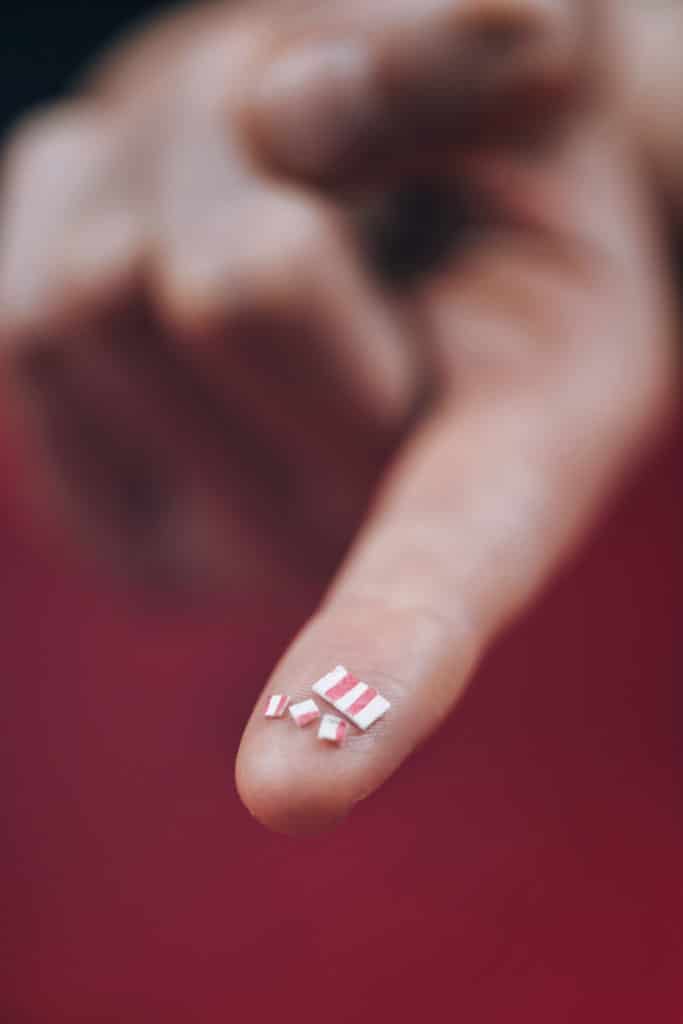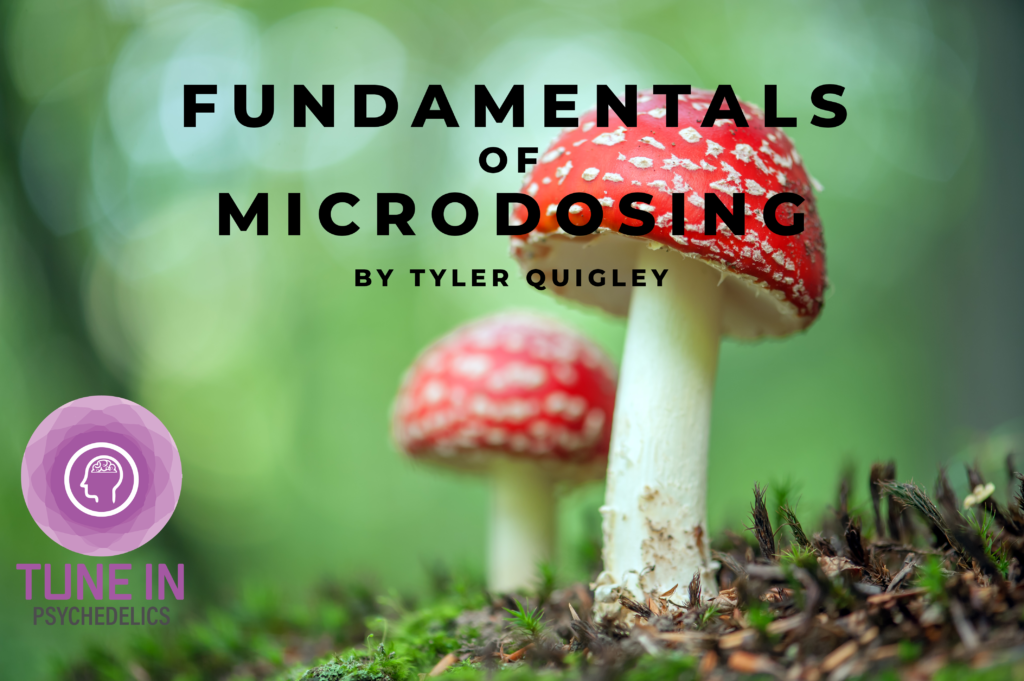
A tab of LSD on your tongue will send you adrift to the depths of human consciousness, illuminated by the vivid colors of your environment and guided by your own deep emotions. An experience like this can leave a lasting improvement in various facets of your mental well-being.1 Many people believe that taking 1/10th of a tab every few days can also improve mental well-being, with the added benefit of remaining sober for daily life. A looming question in psychedelic research is if these beliefs are true.
What is microdosing?
Microdosing is the practice of taking regimented, sub-perceptual doses of a psychedelic substance. A sub-perceptual dose 5-10% of a “recreational” dose, low enough that the user does not experience any changes to their conscious experience. There are many different regimens that microdosers follow, such as once every 2-3 days or every other day. The most microdosed substances are LSD and psilocybin mushrooms. LSD and psilocybin are both serotonin 5HT2a agonists. This means that their primary mode of action in the brain is to activate this specific subtype of serotonin receptors. The activation of these receptors and the neuronal networks they connect is thought to be the physiological basis of their ability to alter consciousness and their therapeutic benefit.
Why do people microdose?

According to a study of one of the largest online communities for microdosing, there are three primary reasons microdosers report developing their practice.2 The first is the self-management of mental health. The experiences of microdosers include an alleviation of depression and anxiety symptoms, as well as improved mood. The second main reason for microdosing is psychosocial improvement, which refers to how one relates to their social environment. Users report taking on healthier behaviors and habits, and improvements in their social interactions and interpersonal connections. The final primary motivation for microdosing is to enhance cognitive and creative abilities. Microdosers report enhancement in both of these areas, being more focused and productive, and a better ability to learn new information.
Evidence of Benefits
There are thousands of anecdotal reports of the benefits of microdosing collected by psychedelic researcher James Fadiman and through forums such as r/microdosing. Interest in the therapeutic benefits of psychedelics has spiked in recent years, including attention towards finding empirical evidence for the benefits of microdosing. A number of studies have found associations between microdosing and the benefits mentioned above such as a reduction in negative attitude and emotion, increased openness, and increased focus, productivity, and creativity.3,4,5 Nevertheless, these preliminary studies are observational and un-controlled, thus require further validation before the results can be considered reality.
A recent study introduced a controlled component to their study with a ‘self-blinding’ technique, though they found that all participants (those that took placebo and psychedelic) reported improvements in the psychological parameters measured. You can read a full summary of this study here. Promising data for a physiological basis to the perceived effects of microdosing was published by Murray et al. in September 2021. The authors found subtle changes in brain activity between participants who received 0, 13, and 26 ug of LSD. Participants in the LSD groups reported positive changes in mood and cognition, and their brain activity resembled patterns seen in individuals on full doses of LSD.6 While 26 ug of LSD is higher than a typical microdose, 13 ug is right on par. These data suggest that 1/10th of a tab is doing something in the brain.
All together, anecdotal evidence for the benefit of microdosing suggests it works, while empirical evidence is mostly missing and largely inconclusive. That being said, if microdosing works for you, it works.
How to get started
The most difficult step to get started with microdosing is sourcing your material, as the most common and safe substances to microdose with are illegal in most countries. Most microdosers grow their own mushrooms using guides from Shroomery, r/shrooms, r/mushroomgrowers, r/unclebens (recommended for beginners), and the DoubleBlind Mushroom Growing Course. Sourcing ready-to-go psychedelics is most commonly done through the Darknet. For learning more about microdosing dosing and regimens, the DoubleBlind Microdosing Course is a great place to start, as well as James Fadiman’s landmark book, The Psychedelic Explorer’s Guide. Finally, you can learn more about microdosing from Tune In Psychedelics CEO Steven Holdt at Cannadelic Miami next month.
References
- 1. Aday, J. S., Mitzkovitz, C. M., Bloesch, E. K., Davoli, C. C. & Davis, A. K. Long-term effects of psychedelic drugs: A systematic review. Neurosci. Biobehav. Rev. 113, 179–189 (2020).
- Lea, T., Amada, N. & Jungaberle, H. Psychedelic Microdosing: A Subreddit Analysis. J. Psychoactive Drugs 52, 101–112 (2020).
- Anderson, T. et al. Microdosing psychedelics: personality, mental health, and creativity differences in microdosers. Psychopharmacology (Berl). 236, 731–740 (2019).
- Polito, V. & Stevenson, R. J. A systematic study of microdosing psychedelics. PLoS One 14, 1–26 (2019).
- Prochazkova, L. et al. Exploring the effect of microdosing psychedelics on creativity in an open-label natural setting. bioRxiv 3401–3413 (2018).
- Murray, C. H. et al. Low doses of LSD reduce broadband oscillatory power and modulate event-related potentials in healthy adults. Psychopharmacology (Berl). (2021).

